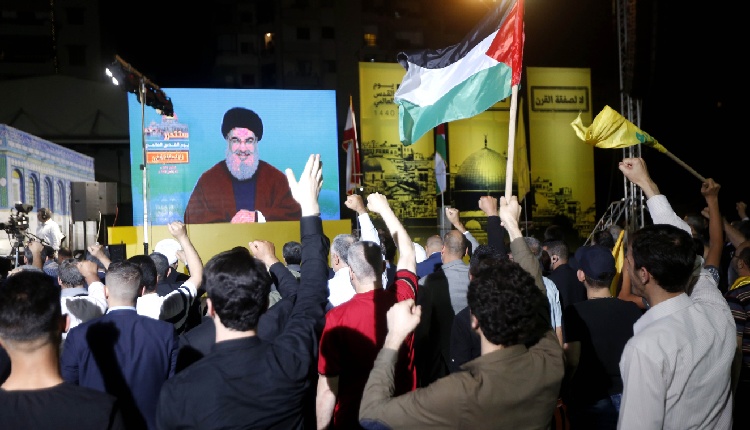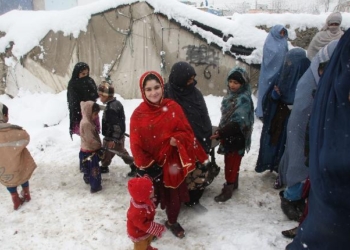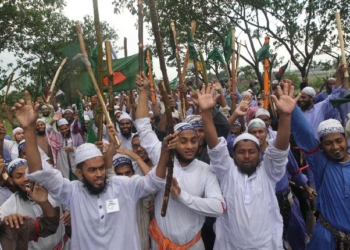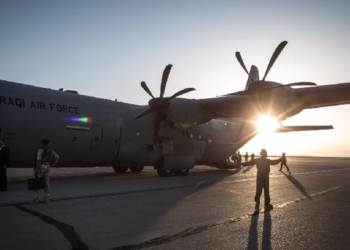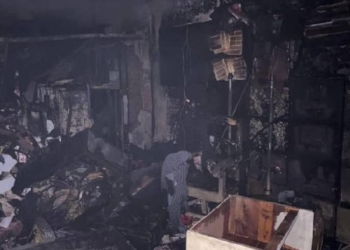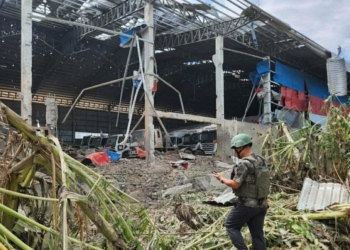New Delhi: Hasan Nasrallah, the chief of powerful Lebanese terrorist group Hezbollah who was eliminated by the Israeli Defense Forces (IDF) late Friday, was responsible for significantly increasing the military capabilities of the organisation under his strategic leadership, including its strong alliance with Iran while maintaining political control over its strongholds in Lebanon.
Nasrallah has been associated with Hezbollah since the terror group’s inception in 1982 following the Israeli invasion of Lebanon. In 1992, he took over as the leader of the organisation with an aim to make it a hybrid political-military entity.
“During the 32 years of the terrorist Hassan Nasrallah’s tenure as the leader of Hezbollah, he was responsible for the murder of many Israeli civilians and soldiers, and for the planning and execution of thousands of terrorist acts against the State of Israel and around the world. Nasrallah was the main decision-maker and the sole approver of strategic-systemic decisions, and sometimes also tactical decisions in the organisation,” said Israeli Chief of Staff, Lt. Col. Herzi Halevi.
The statement came a few hours after Nasrallah, along with the top brass of the terrorist organisation, were eliminated in the strikes by the fighter jets of the Israeli Air Force “under the precise intelligence guidance of the intelligence wing and the defence system”, at the underground central headquarters of Hezbollah, located under a residential building, in the Daha area of Beirut.
The entire operation, planned for long by the IDF, was titled “New Order”.
As the Secretary General and head of the Shura Council – Hezbollah’s supreme decision-making body responsible for religious, military, and strategic matters – Nasrallah was the group’s highest-ranking official and exercised direct command over Hezbollah’s military and security apparatus as its supreme commander.
Under him, Hezbollah gained political legitimacy within Lebanon while simultaneously engaging in activities that undermined regional stability.
Nasrallah also guided Hezbollah to increase its troop strength to 20,000 to 25,000 full-time fighters, with additional tens of thousands in reserves.
Hezbollah, said the IDF, has built itself into the “world’s most powerful non-state actor” over the last few decades.
“The armament capabilities of Hezbollah Lebanon are notable and more similar to that of a midsize country’s army. It boasts over 150,000 rockets and missiles, including the Iranian made Fajr-5 and Zelzal-2 rockets. These armaments underscore the threat that Hezbollah poses to Israeli security, as their arsenal is capable of reaching deep into Israel’s territory,” states IDF.
The Israeli government has, over the past many years, slammed Nasrallah for making public statements that have been marked by “extreme anti-Semitism” even as he remained in hiding, making speeches from bunkers.
Starting with the 1983 Beirut barracks bombing, that killed 241 US servicemen, to the October 2023 attacks on Israel that has led to the displacement of thousands of people on both sides of the border, Nasrallah was believed to the mastermind behind Hezbollah’s number of large scale terror attacks against Israeli and Western targets over the last 40 years.
“Until 9/11, Hezbollah was responsible for more American deaths than any terror organisation in the world,” maintains the IDF.
As Hezbollah drew worldwide condemnation, it was recognised as a global terrorist organization by the United States, the United Kingdom, The Arab League, Canada, Argentina, Bahrain, Colombia, Germany, the Gulf Cooperation Council, Honduras, Israel, the Netherlands, Paraguay and a number of other countries.
Both, the US and Israel, shared the view that Nasrallah operated throughout Lebanon “with relative impunity”, working closely with Iranian officials to provide training and other military support to Shia militants in Iraq, Syria, and Yemen while conducting lethal attacks globally.
“Hezbollah has state-like military capabilities, including air defence systems; antiship, antitank, and precision-guided missiles; rockets; and unmanned aircraft systems. Hezbollah is proficient in a range of asymmetric and conventional tactics, including ambushes, assassinations, bombings, indirect-fire attacks, kidnappings, and other undercover operations,” reckons the US Director of National Intelligence (DNI).
In May 2018, the Terrorist Financing Targeting Center (TFTC) – a multilateral body created to strengthen cooperation among seven countries of Bahrain, Kuwait, Oman, Qatar, Saudi Arabia, United Arab Emirates, and the United States to disrupt terrorist financing networks and related activities of mutual concern – took significant actions to disrupt “an Iranian-backed terrorist group” by designating the senior leadership of Lebanese Hezbollah.
“Under the dictates of the Iranian Revolutionary Guard Corps-Qods Force (IRGC-QF), Secretary General and head of the Shura Council Hasan Nasrallah is prolonging the human suffering in Syria, fueling the violence in Iraq and Yemen, putting the Lebanese state and the Lebanese people at risk, and destabilizing the entire region,” said then Secretary of the US Department of Treasury, Steven Mnuchin.
Hezbollah and Nasrallah joining the war against Israel on October 8, last year, dragged Lebanon and the entire region into escalation.
“This is not the end of the toolbox, it should be very clear. There are more tools to go forward. The message is a simple message: whoever threatens the citizens of the State of Israel – we will know how to reach them. In the north, in the south, even in more distant places,” said Halevi.
(IANS)




